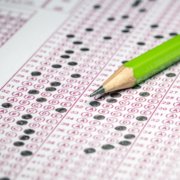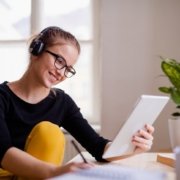It was challenging enough just being a parent, but now, thanks to widespread school closures in response to the COVID-19 outbreak, you may be faced with an entirely new role: your child’s teacher.
For some, the role of teacher comes naturally and offers a wonderful chance for bonding and development. For others, teaching is a foreign—and not altogether welcome—task that can spark discord and frustration.
Whether you love it or hate it, teaching your own kids can be tough, so to help make it just a bit easier, we’ve put together a list of parent resources during the COVID-19 outbreak.
Resources to Supplement Schoolwork
Schools may be closed, but most students are attending digital learning days with their school teachers. Teachers across the country have made an amazing transition from classroom-based learning to digital learning, often with little official training and no time to prepare. These digital solutions might not be ideal, but they are a testament to the dedication of our children’s educators.
If we want our children to learn to their full potential, it isn’t enough to simply help them complete their digital learning assignments. We need to fill the gap between what teachers can do digitally and what they would normally be able to do in person. The following resources can be used to supplement the digital learning students are doing with their schools.
Great Schools Coronavirus Support
Great Schools has curated K-12 resources by grade level, including worksheets and book lists.
The Newsela platform curates articles based on a student’s reading ability and provides standards-aligned lessons for English, Social Studies, and Science. This is a great resource to supplement critical reading, writing, and reasoning skills.
Khan Academy is already used in a lot of classrooms. The platform offers video lessons and practice problems in a variety of subjects for grades K through 12. You can create a parent account to track your child’s progress.
New York Times’ Learning Network
The New York Times has made its writing prompts and related resources available for free. Students are invited to share their opinions and analysis of articles on a variety of topics, providing valuable peer interaction and learning opportunities.
PBS has curated standards-aligned videos and lesson plans in a variety of subject areas for students from pre-K through 12th grade. Create a teacher account to access lesson plans.
Enrichment without Leaving Home
As parents, we try to bring enriching activities into our children’s lives. We take them to the zoo or the museum, we seek teachable moments in daily life, and we encourage intellectual curiosity. All of this is much more difficult when we are housebound.
These resources provide virtual enrichment opportunities to keep our kids engaged and learning.
TED-Ed is a collection of video lessons curated for students from elementary through high school. Some lessons would be great supplements for the stuff kids are learning through their digital school days. Others offer a great enrichment experience to keep young minds learning. Encourage and satisfy curiosity with videos on topics from engineering to philosophy. Thank you for coming to my TED Talk.
Outschool offers small group video chat classes on a huge variety of topics. There’s something for every student here: Herbology 1 covers plant science with a Harry Potter theme, Murder at the Baxter Hotel lets students solve a murder mystery, and What’s for Dinner Tonight walks students through making a family dinner.
That trip to the aquarium is cancelled. So are plans to see the new exhibit at the science museum. Ditto for the family vacation to DC. But our children can still see and learn about new things! There are tons of resources for virtual field trips, from the zoo to the Met to the farm. This website offers a great list of virtual field trips to keep the kids busy.
Coding is a great skill to develop. Not only can it be fun to learn, it can help students explore and pursue tons of potential careers. Code.org has curated suggested learning resources to help students learn to code during the COVID-19 school closures.









